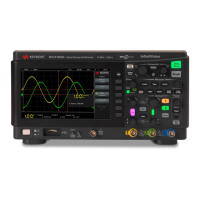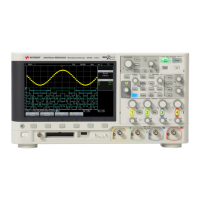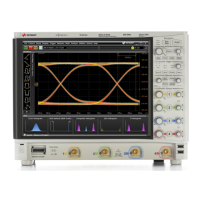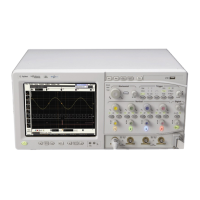FFT Spectral Analysis 4
Keysight InfiniiVision HD3-Series Oscilloscopes User's Guide 69
• Sample — Takes the point nearest to the center of every bucket.
• + Peak — Takes the most positive point in every bucket.
• - Peak — Takes the most negative point in every bucket.
• Average — Takes the average of all points in every bucket.
• Normal — Implements a rosenfell algorithm. This method picks either the
minimum or maximum sample in every bucket depending on whether the
data is monotonically increasing, decreasing, or varying.
When detectors are used, the FFT's output is decimated, and any analysis is
performed on the reduced or detected data set.
• Points per Span — When the FFT (Magnitude) operator is selected and a detector is
used, this field specifies the maximum number of points that detectors should
decimate to. This is also the number of buckets that sampled FFT points are
grouped into before the selected detection type reduction (decimation) is
applied.
The minimum number of points is 640.
The maximum number of points is 64K.
See Also •
"Searching for FFT Peaks" on page 70
• "FFT Measurement Hints" on page 71
• "FFT Units" on page 72
• "FFT DC Value" on page 72
• "FFT Aliasing" on page 72
The following figure illustrates aliasing. This is the spectrum of a 990 Hz square
wave, which has many harmonics. The horizontal time/div setting for the
square wave sets the sample rate and results in a FFT resolution of 1.91 Hz. The
displayed FFT spectrum waveform shows the components of the input signal
above the Nyquist frequency to be mirrored (aliased) on the display and
reflected off the right edge.

